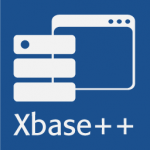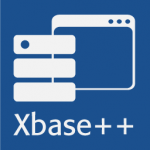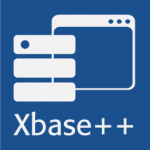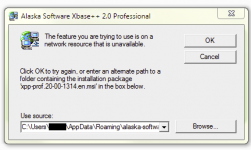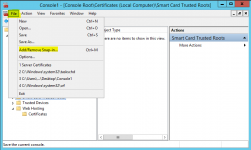Articles
You are using an out of date browser. It may not display this or other websites correctly.
You should upgrade or use an alternative browser.
You should upgrade or use an alternative browser.
Categories
-
How to... 28
I Love Xbase++ (ILX)
The portal for Xbase++ developers worldwide
-
Explore Xbase++ Why re-implementation of software systems so often fails
The re-implementation of existing legacy software systems often faces significant challenges, and understanding these can illuminate why such projects frequently fail. This little write-up is far from complete but tries to create awareness regarding these important and very often underrated... -
Why configuration of your PostgreSQL Server is essential!
Background As you may have already realized, a PostgreSQL server or any SQL server in general is a "relatively" complicated story. The reason for that is basically that the server with the planner tries to replace you as a human. In ISAM you have the data model in mind, also the requirements of... -
Design Understanding Member Variables and Visibility Design in Xbase++
Introduction When working with object-oriented programming (OOP), the concept of member variables and their visibility is fundamental. Xbase++ follows these principles, offering various visibility levels for member variables in classes. This article intends to explore these concepts in the... -
V2.0 Using SQL Constraints for Data Integrity in Xbase++ with PostgreSQL
Background Xbase++ allows seamless integration with SQL backends like PostgreSQL using the DacSession() object. When working with SQL databases, enforcing data integrity through application logic alone is not always sufficient. Native SQL constraints (such as CHECK, UNIQUE, or FOREIGN KEY)... -
V2.0 Remote Filters in Xbase++ with PostgreSQL ISAM Emulation
Xbase++ developers often use ISAM (Indexed Sequential Access Method) for data management because of its efficiency and straightforward approach to handling database operations. Moving to PostgreSQL, a robust SQL database, offers enhanced capabilities but requires an understanding of new...
Filters
Show only:
Loading…
Comments for Xbase++ 1.9 users
1. Support for projects with targets in multiple directories
Beginning with Xbase++ version 2.0, complex project scenarios involving targets located in different directories are fully supported. This required changes in the way the targets and the source files...
Background
The Xbase++ PostgreSQL DatabaseEngine provides two different access method to data. First, the ISAM emulating approach which works with dedicated SQL tables only. These SQL tables need to be created using ISAM commands like DbCreate/INDEX ON/OrdCreate or have been upsized from...
Reg-free COM allows using a copy-deployment for applications depending on COM/ActiveX component. As the name implies, Reg-free COM means there's no need to register COM/ActiveX components prior to using them. To achieve this, the application requires one or more manifest files which describe the...
Xbase++ provides INIT procedures, a concepts which allows by a simple declaration of INIT before the procedure keyword to ensure that this procedure is executed before your procedure main is executed. An example is shown below.
INIT PROCEDURE startupMyModule()
// your code is
RETURN...
Background
Sometimes, an application may exhibit symptoms which are hard to understand without having information about the internal state, the workflow and timing of operations. This was not an issue with desktop applications as these basically follow the action->reaction principle. Anybody who...
Background
The Update Manager in the Xbase++ Workbench usually provides a seamless update experience; after clicking "Download and Install", the update process usually runs through without further user interaction. However like all processes, it can fail. This article provides some background...
For an overview how COM/ActiveX components can be used from Xbase++ refer to the Xbase++ help ActiveX Overview, expecially to the section Reacting to COM/ActiveX events. Here you can find a working sample how to react to the MS Word quit-event.
Introduction
Email providers such as Google GMail allow authentication of the Smtp and Pop3 client via the OAuth2 security protocol. Furthermore, it is foreseeable that sooner or later other authentications will no longer be allowed. Google has already announced this step.
The OAuth2 security...
Sometimes your application may experience run-time errors such as "error while reading a file" during DbSkip() or DbSeek() operations. These errors often occur in the following scenarios:
large number of concurrent users (>= 15)
large index expressions
large index files (> 500Mb)
In these...
Introduction
This article assumes knowledge of how to use the Asset Manager of the Xbase++ Workbench. You will find an introduction to the Asset Manager of the Xbase++ Workbench in the article Xbase++ Workbench Asset Management.
The Xbase++ OAuth2 asset implements the protocols for the OAuth2...
Introduction
Xbase++ comes with so-called assets. You can consider an asset as a reference implementation. The idea of assets is to formalize the packaging of libraries, frameworks, etc. beyond the Xbase++ core product featureset. In practice, assets are there to clean up the project chaos and...
It is possible to automate the creation of MS Word documents and also to style the text. For this a Word document is created or opened via the Xbase++ COM/ActiveX layer. The Word instance is represented in Xbase++ by an object of the class AutomationObject(). The document can be manipulated via...
Some technical background
When an application is loaded, the operating system's image loader examines the import directory of the exe file. In this import directory the dll names with their functions (so-called procedure entry points) are listed, which are needed for the application. These...
Problem description
The Xbase++ ISAM emulation uses a native PostgreSQL sequence to calculate the next record number for append operations. Therefore the success of a DbAppend()/APPEND directly depends on the correctness of that PostgreSQL sequence. As a matter of fact the sequence can become...
Background
When a source file ( .prg or .arc) is compiled, then an intermediate file ( .obj or .res ) is created that is finally linked to an executable ( .exe ) or library ( .dll ). The Xbase++ compilers xpp.exe and arc.exe create the intermediates next to their source files. This behavior is...
Background
The PostgreSQL columns of type TEXT and BYTEA allow the storage of large binary data (e.g. PDF documents or images) up to 1GB. If such column types are used in a table their data is accessed like any other data of the record when using the Xbase++ ISAM emulation. With each...
In a std I/O application, output occurs to the current console. The font used for outputting text into the associated window is controlled by the system and can be changed via the console properties.
The following function can be used to determine the size of the font set for the window...
By default the Xbase++ WebHandler does negotiate the content type encoding automatically. The following simple AddressService returns a Object and leaves the content negotiation up to the WebHandler and the request sending party. The great benefit of that approach is that your service interfaces...
Background
The HttpEndpoint can be bound to an SSL certificate but it must be available in the Windows Certificate Store. This howto article describes how to provide a certificate using the win-acme tool and the IIS web server and how to bind the HttpClient to it.
On the Let's Encrypt homepage...
Background
Starting with version 13 of PostgreSQL, the default authentication method was changed from MD5 to SCRAM. This authentication method is incompatible with the pqlib client dll used by the PostgreSQL Database Engine shipping with Xbase++ (status: build 1360). As a consequence, attempting...
Latest articles
-
Xbase++ Workbench's Regular Expression Engine Cheat-SheetOverview This document serves as a cheat sheet for the syntax of the regular expressions that...
- Anna Hristova
- Updated:
- 2 min read
-
Design Understanding Member Variables and Visibility Design in Xbase++Introduction When working with object-oriented programming (OOP), the concept of member...
- Steffen F. Pirsig
- Updated:
- 3 min read
-
Reviewing Primary Key Definitions When Migrating from ADS to PostgreSQL with Xbase++ ISAM EmulationBackground The Advantage Database Server (ADS), commonly used with Xbase++, has long served...
- Steffen F. Pirsig
- Updated:
- 2 min read
-
Correcting Image Orientation Using EXIF Metadata in Xbase++When displaying images in Xbase++, you might encounter image files that appear rotated or...
- Andreas Herdt
- Updated:
- 3 min read
-
V2.0 Using SQL Constraints for Data Integrity in Xbase++ with PostgreSQLBackground Xbase++ allows seamless integration with SQL backends like PostgreSQL using the...
- Jeffrey Wulf
- Updated:
- 3 min read





